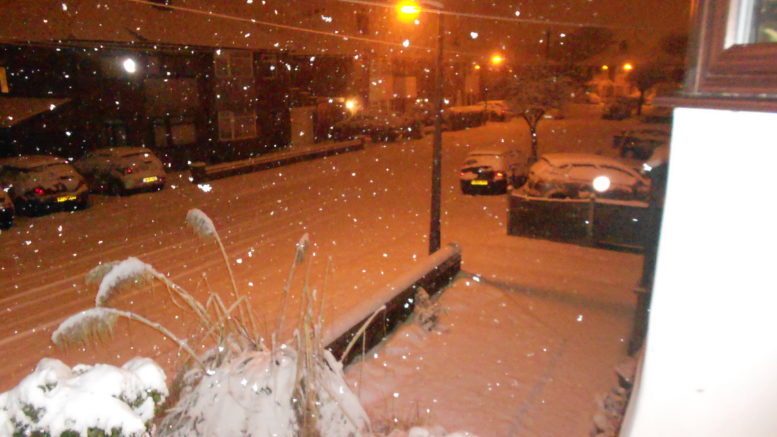The shortest day may be over, but with several months of winter still to go, we can continue to expect the cold temperatures, rain, hail, wind, snow and fog that are usually on offer at this time of year. But how will these conditions impact on your health and safety obligations? Here are five key areas where you might consider extra measures to protect your workers over the winter.
Duties of an employer
Under the Health & Safety at Work Etc Act 1974, an employer has a duty to ensure, so far as is reasonably practicable, the health, safety and welfare at work of all employees. You also have an equivalent duty to anyone else who may be affected by the work being carried out – including self-employed workers, contractors, visitors, or members of the public. But how does this apply to winter working conditions?
1. Assessing Risk
Firstly, under the Management of Health & Safety at Work Regulations 1999, an employer has a duty to make a “suitable and sufficient” assessment of the risks at work, and to identify measures to manage those risks. This duty applies all year round; but winter conditions can introduce new considerations. Risks may change between seasons and additional measures may be needed to best protect workers’ safety. Some examples may include:
- Access to work areas: Will snow, ice or wet conditions prevent safe access to a work area? If so, is there an alternative route or can you take any steps to reduce the risks, e.g. gritting access roads and car parks?
- Visibility: Will workers be expected to work in the hours of darkness? If so, what measures do you have in place to ensure the area is sufficiently lit?
- Snow days: Have you checked the weather forecast? Do you have emergency procedures in place if conditions deteriorate unexpectedly?
Thinking about these potential issues ahead of time could avoid accidents occurring – or make a situation easier to manage if there is an incident.
2. Lone Working
As noted in our previous update , a significant issue for health and safety in the rural sector is lone working. The risks to lone workers can be heightened in winter: if an individual is injured in a remote location, it may be more difficult to safely reach them if weather conditions are poor. In addition, low temperatures could put an injured person at risk of prolonged cold weather exposure and the health risks associated with that if there is delay in raising the alarm.
If lone working is essential, you should review your risk assessment and may wish to add additional control measures for the winter season, such as putting in place more regular communication and check-in procedures, to confirm the location and well-being of the worker throughout the activity.
In some cases, a task may be appropriate for lone working in the summer, but not in winter. In that scenario, other options for completing the task, such as sending at least two people to do the work, should be considered if this would manage or reduce the risks to a reasonable level.
3. Break Times
Under Regulation 12 of the Working Time Regulations 1998, where working time is more than six hours, a worker is entitled to an uninterrupted break of at least 20 minutes.
This does not apply to workers employed in agriculture where the worker’s activity involves a need for continuity. However, from a health and safety perspective, it is important that breaks are considered for employees to ensure they are capable of carrying out their work safely – particularly when working in cold conditions. Time spent outside may need to be limited, or provision made for return to a heated area to warm up at regular intervals. It should also be noted that the “continuity exemption” does not apply for young workers between 15 and 18, who are entitled to a 30 minute break where working time is more than four and a half hours.
Where workers are inside a building, under the Workplace (Health, Safety and Welfare) Regulations 1992, employers are required to provide suitable and sufficient rest facilities for employees to take their break and eat meals. The workplace should also be kept at a “reasonable” temperature. There are exemptions for employees working in fields, woods or other agricultural settings, but again, consideration should be given to whether additional measures are needed for winter working – such as offering an indoor rest area, providing hot drinks, or allowing workers to take additional breaks.
4. Slips and Trips
In a rural setting, as in all industries, there is an increased risk of slips and falls during a cold snap when ice or snow is more likely. Such risks need to be considered as part of the wider workplace risk assessment, but it is worth noting these may include not only your premises, but other areas such as private access roads or car parks.
The case of Kennedy v Cordia (Services) LLP (2016) established that an employer was liable even when an employee’s injury was caused by a fall on a private pathway. The court concluded that as the employee, a care worker, was exposed to the risk in the course of her work (when visiting an elderly client), her employer should have taken steps to reduce this risk to ensure her safety – for example, by providing anti-slip attachments for her shoes. Careful consideration should be given to what protective measures might be necessary for employees at risk of slips and falls if they will be crossing or accessing areas which are outwith your day-to-day control.
5. Personal Protective Equipment
As well as appropriate footwear, under the Personal Protective Equipment Regulations 1992, employers have a duty to ensure that suitable personal protective equipment (PPE) is provided to employees who may be exposed to a risk to their health and safety whilst at work. This may include winter clothing, such as fleeces, gloves and hats, in addition to their usual workwear.
While additional warm clothing may be needed in winter, employers also have a duty to ensure all PPE is compatible and continues to be effective. So, for example, additional warm clothing should not prevent existing protections, such as ear protectors, gloves or harnesses from fitting correctly. As the weather changes, PPE should be regularly assessed to ensure that it is still fit for purpose and for the working conditions.
Is this going to affect the business?
Winter conditions should not, except in extreme circumstances, prevent your business from continuing to operate. However, it is important to think about how you may need to amend or adapt your processes and procedures, to deal with the worst of the weather and keep your workers safe until the long dark nights are over, and spring starts to arrive.
Article by Brodies LLP


